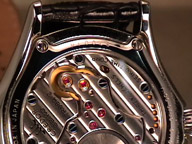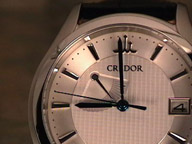Following an initial introduction of a spring drive watch in 1999, Seiko introduced the Credor version at the Basel watch show in the spring of 2002. The Credor line is just a step below Grand Seiko in terms of price and prestige, but generally at the leading edge of Seiko's technological accomplishments. Almost 3 years later, spring drive will soon migrate into some GS watches, but it is still an exotic and relatively expensive mechanism with no direct competitors that I am aware of. Typical of its Credor siblings, the spring drive watch is dressy in style and rather sedate in design. The case measures 38mm by 8.5mm, and the slightly domed sapphire crystal and polished bezel are mounted on a case featuring exceptionally smooth-curving, long (19mm spacing) lugs and a slight guard for the inset crown. Only the tops of the lugs and their side extensions are brushed, the rest of the watch is polished stainless steel. From the sides and rear the case has the tapered and slightly recessed profile common to so many Seiko watches, even their automatic divers! All in all it is a handsome and contemporary package, easy to wear and elegant if not truly formal.
The silvered dial incorporates several different textures, vertical waves, full and truncated concentrics and a sort of modified sunburst pattern. It is all very subtle and really tends to define the various reflections which highlight the dial's design, there is no sense of busyness at all. The dial is stamped, rather than engraved, for which Seiko makes no apology, (in fact is is highlighted in the movie viewable at their website).The sculptured hour markers, date window surround and logo are applied and highly polished, while the minutes and Credor name are printed and black. The three time-telling hands are very bright blue and the power reserve hand is polished white metal. Like every upper-tier (and many quite pedestrian) Seiko I have encountered, the finish is meticulous, almost radiant.
Click the pictures for even larger!
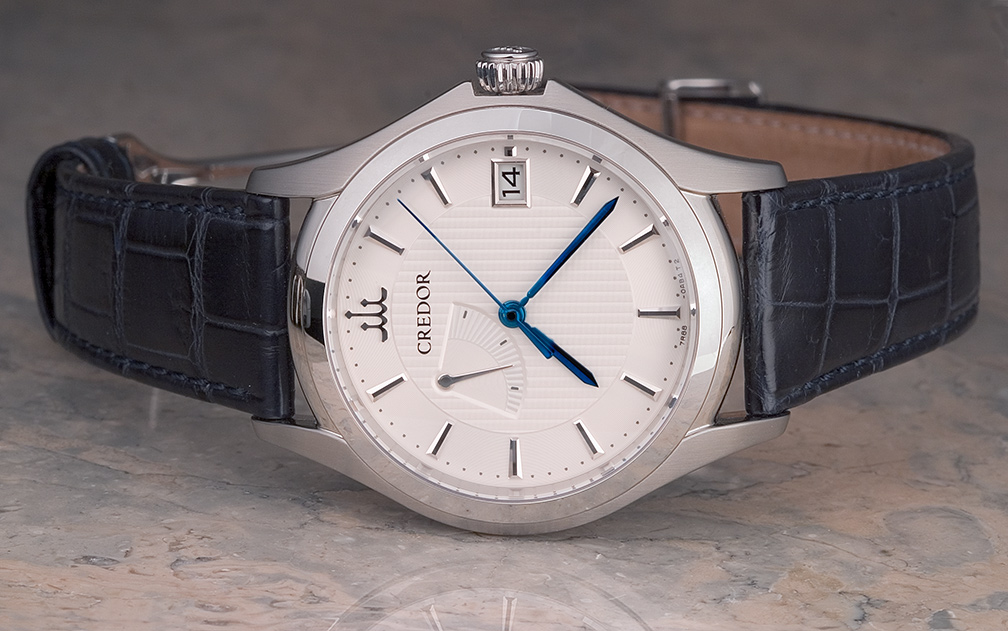
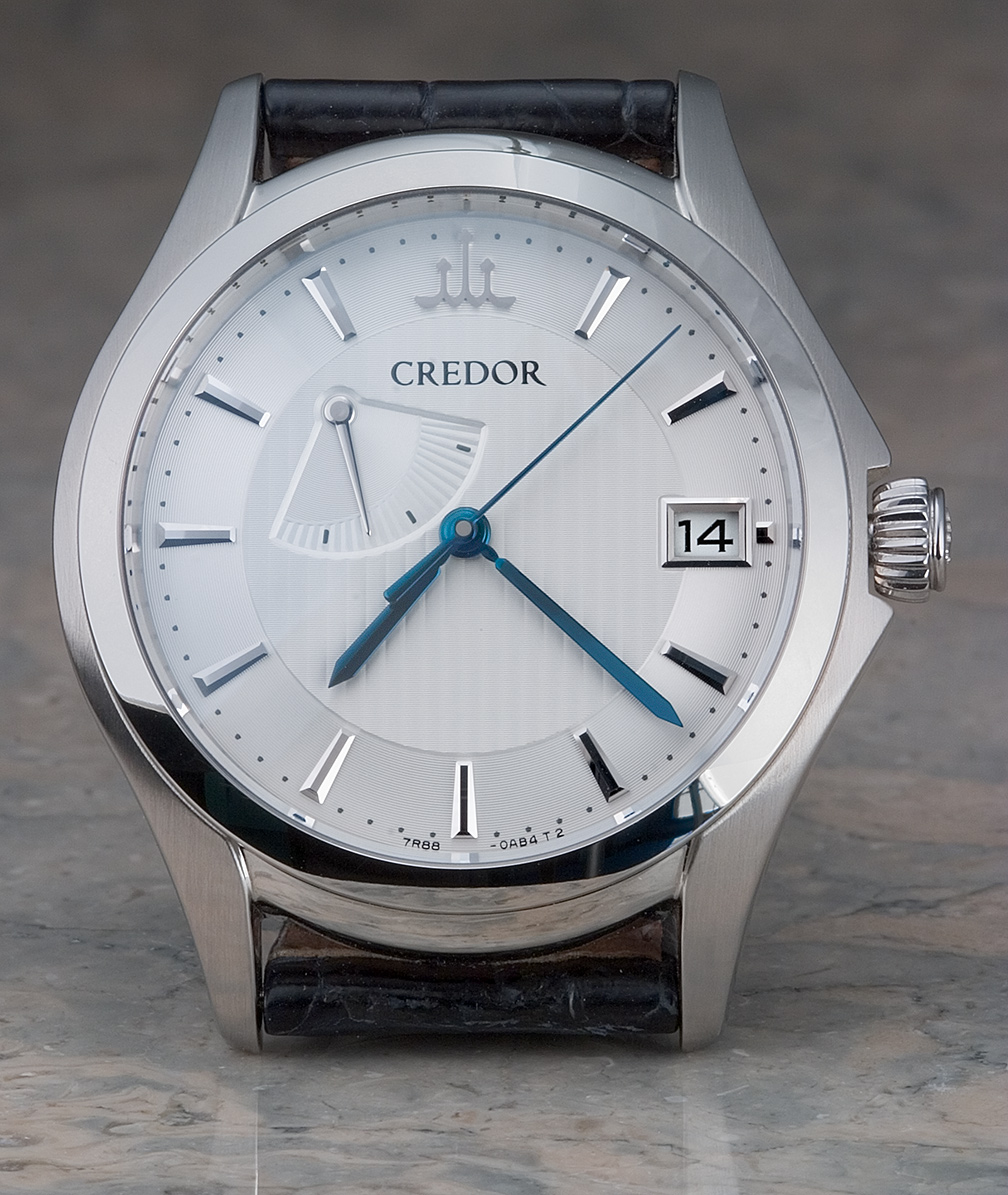
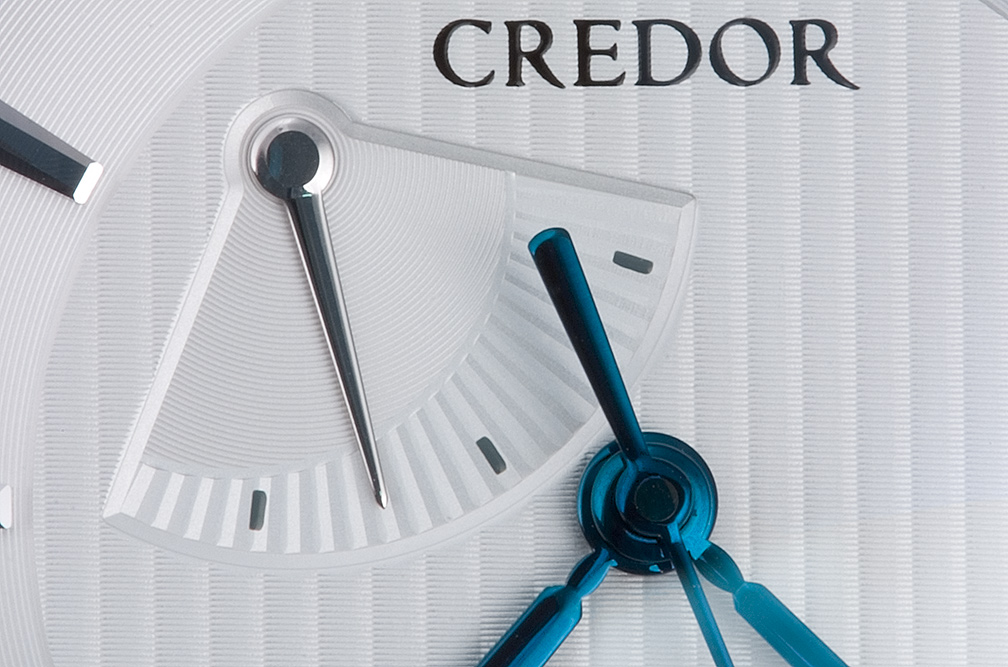
The spring drive approach to regulation is entirely distinct, and offers something to both high-tech gadgeteers and traditionalists. There is no motor, no battery or electric storage unit; all the energy required to run and regulate the watch is stored in the mainspring, and it even requires winding by hand! The gear train which runs the hands is dead-standard, and then there are a few wheels (including the seconds-hand) which turn progressively faster until...well, rather than an escape wheel and balance/hairspring, there is one final wheel which rotates 200 times/minute, and then a smooth flywheel and attached rotor..which runs...very fast indeed. The minute amount of electricity necessary to run an integrated circuit/quartz feedback system is constantly generated, and regulation is accomplished by measuring the rate at this far end of the train and braking as necessary the flywheel (a slightly less opaque explanation of the process may be found within Seiko's press release). And the seconds-hand moves...constantly, along with the flywheel. There are no steps, none at all unless they are at the nano-temporal level. For all intents and purposes the spring drive is a handwinding, quartz-regulated analog watch, maybe the first analog watch ever, since with purely mechanical regulation the various parts of the balance/hairspring/escapement all stop and restart 5-10 times per second.
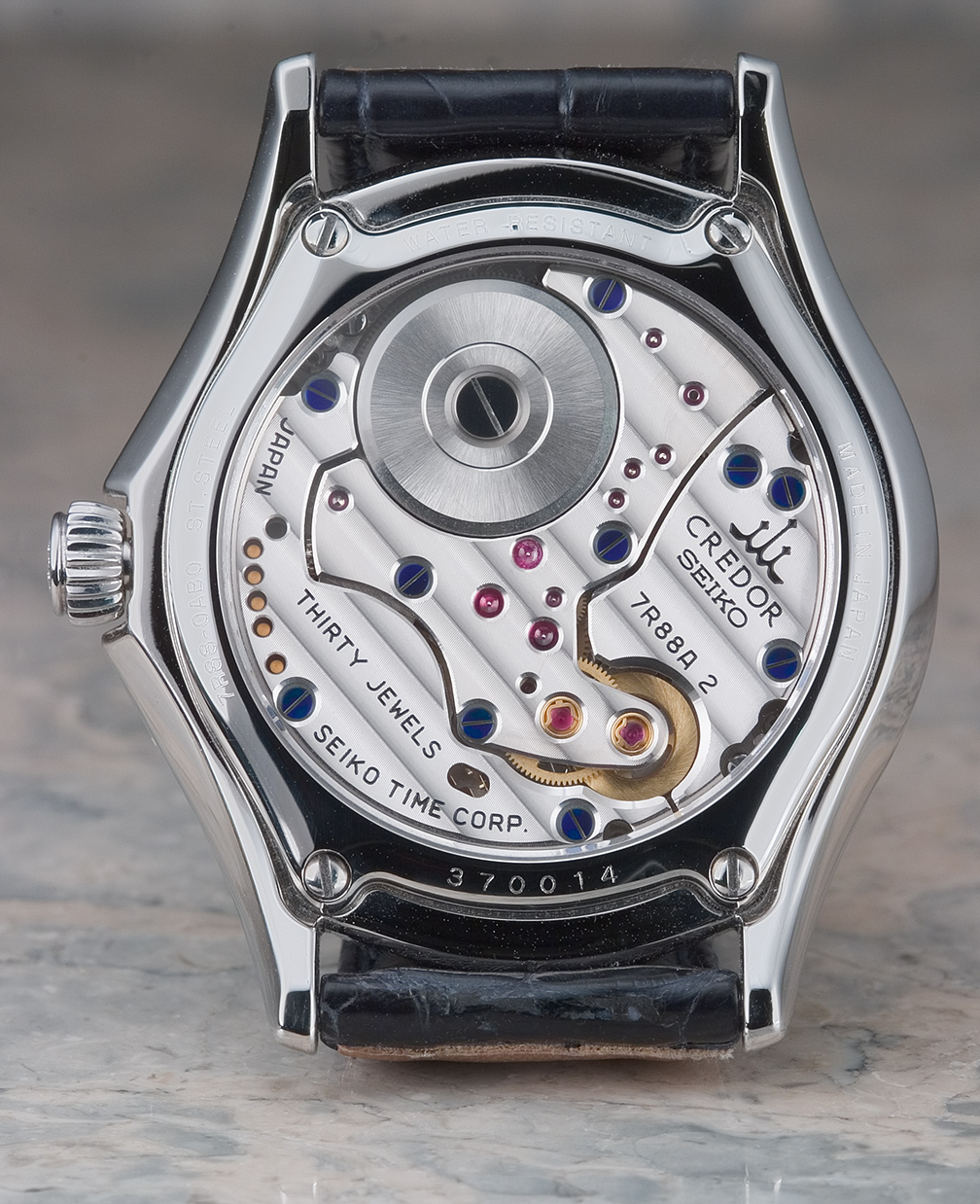
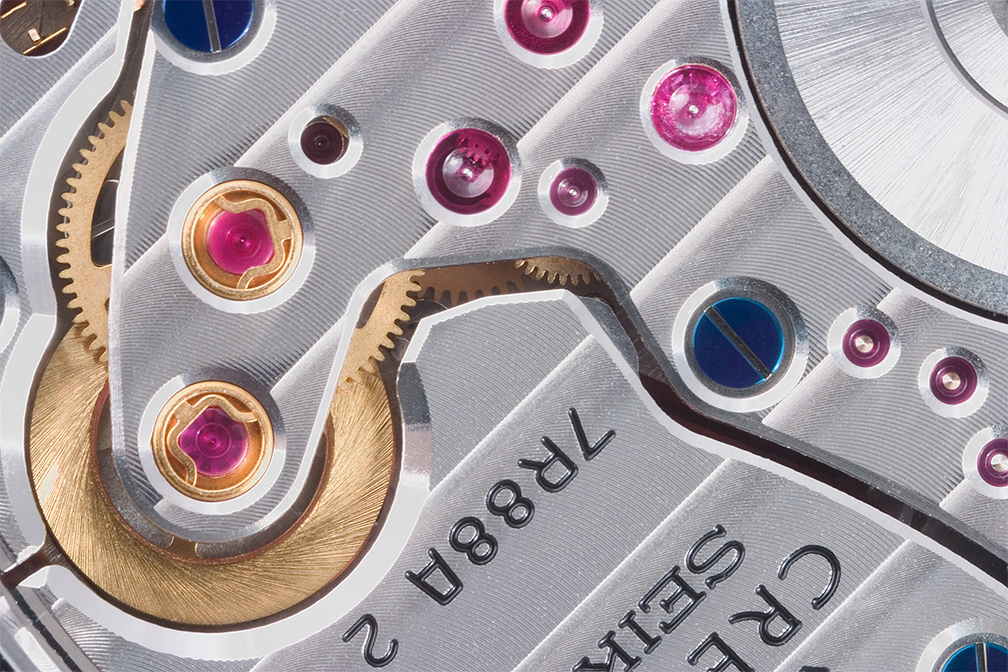
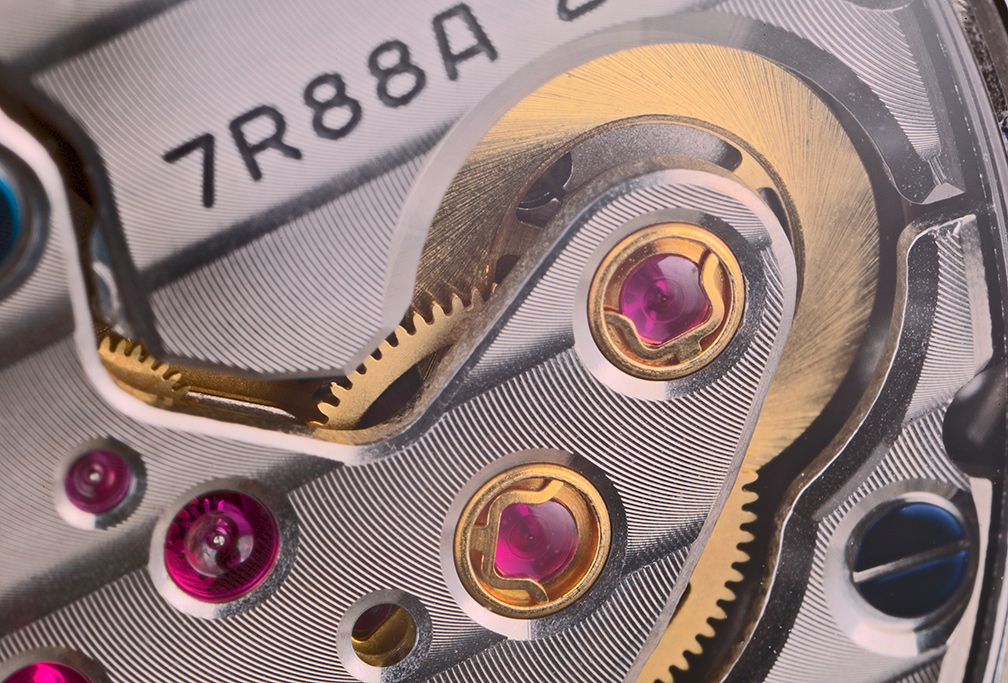
|
You can view a brief movie of the flywheel and last wheel in action by clicking here:
|
While the seconds-hands performs like this:
|
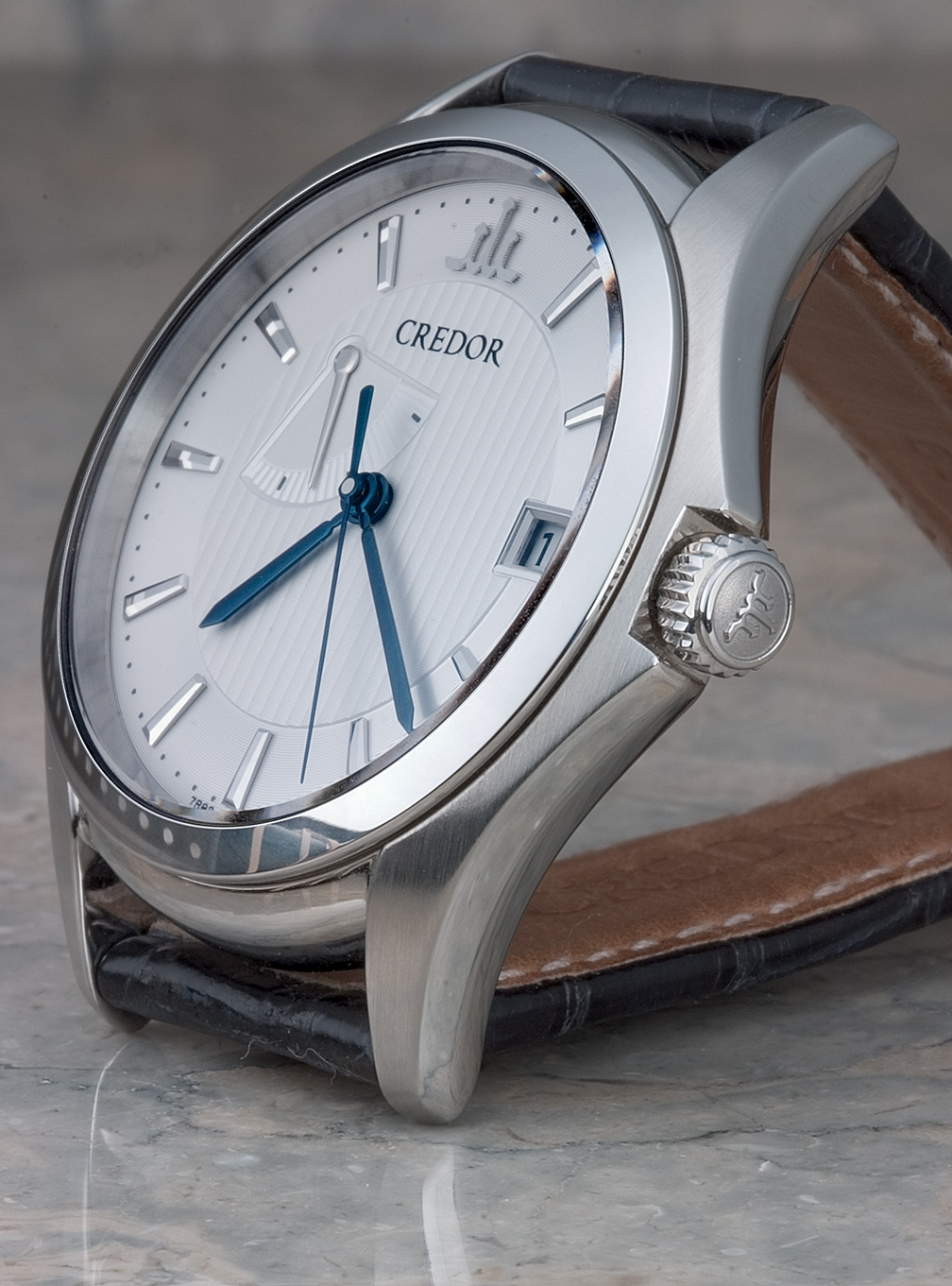
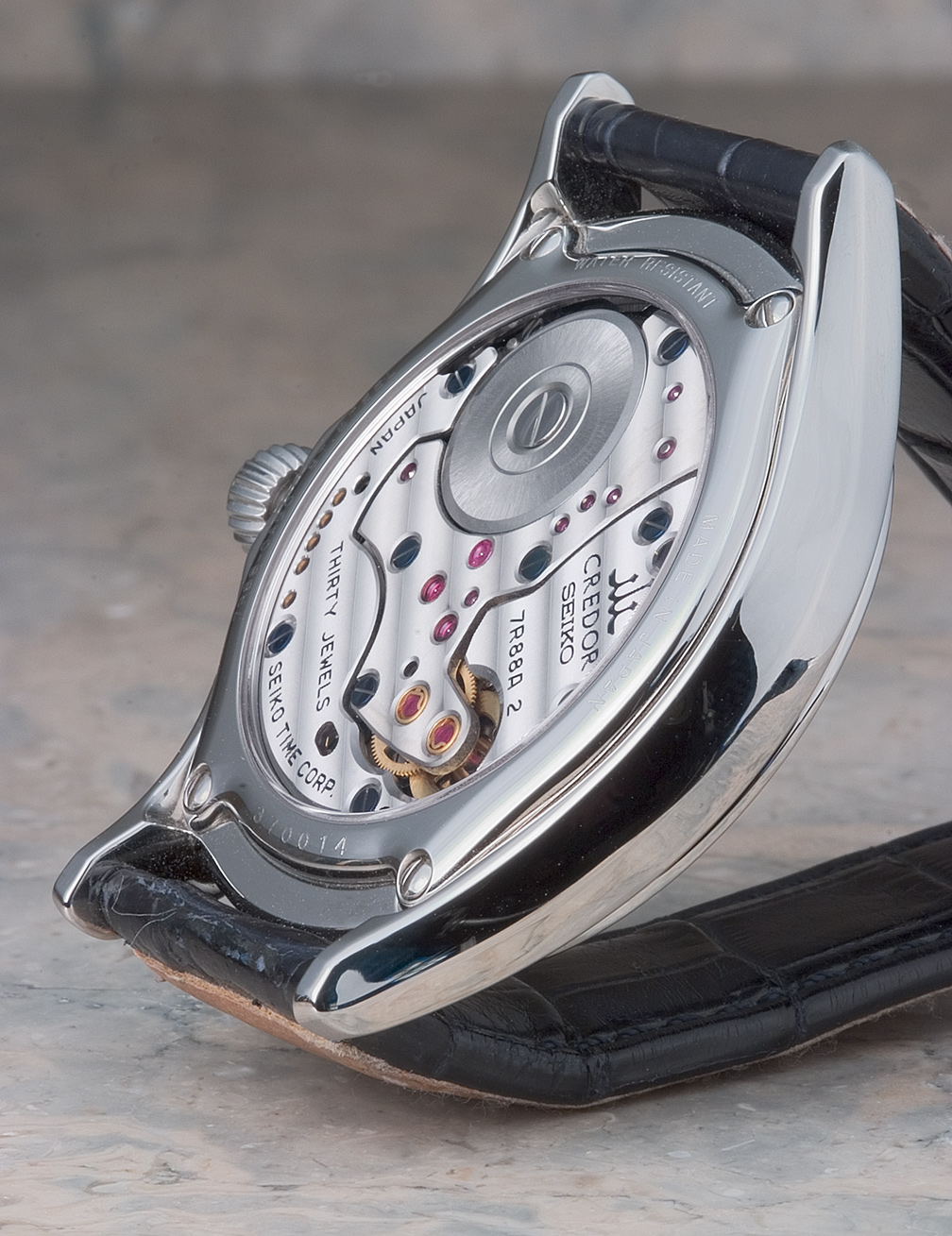
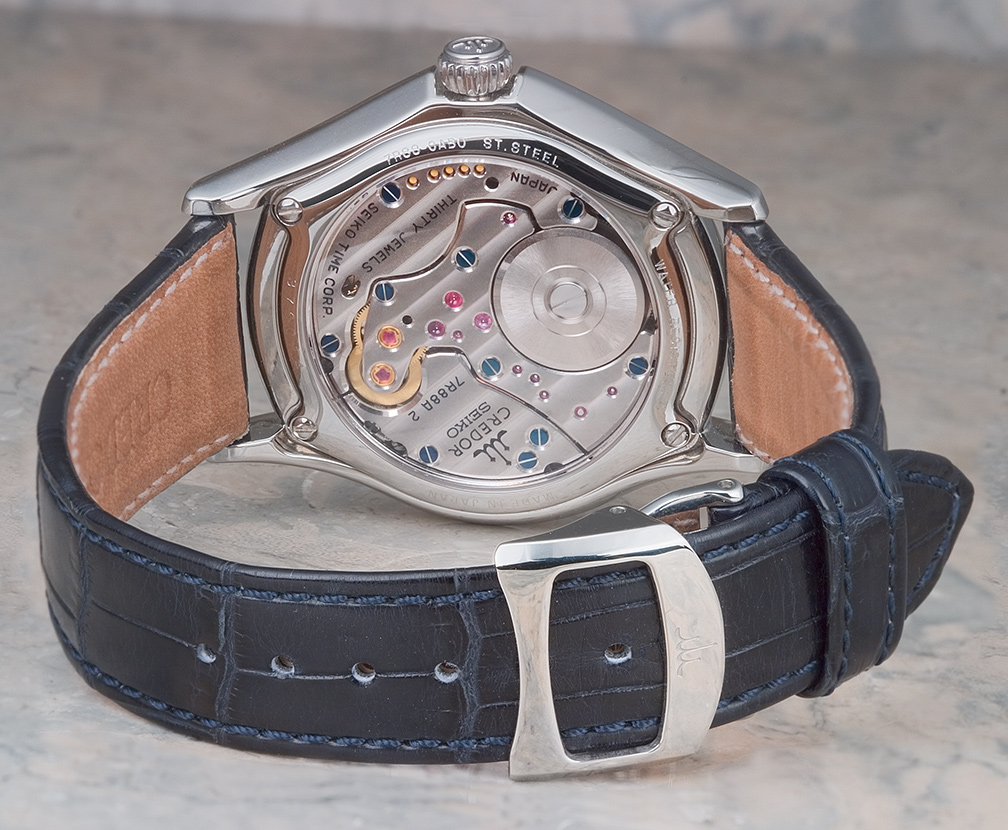
I hope you enjoyed this!
Please check out the rest of my Watch Articles and Pics
SteveG
September 22, 2004
All content Copyright asserted 2003, 2004
